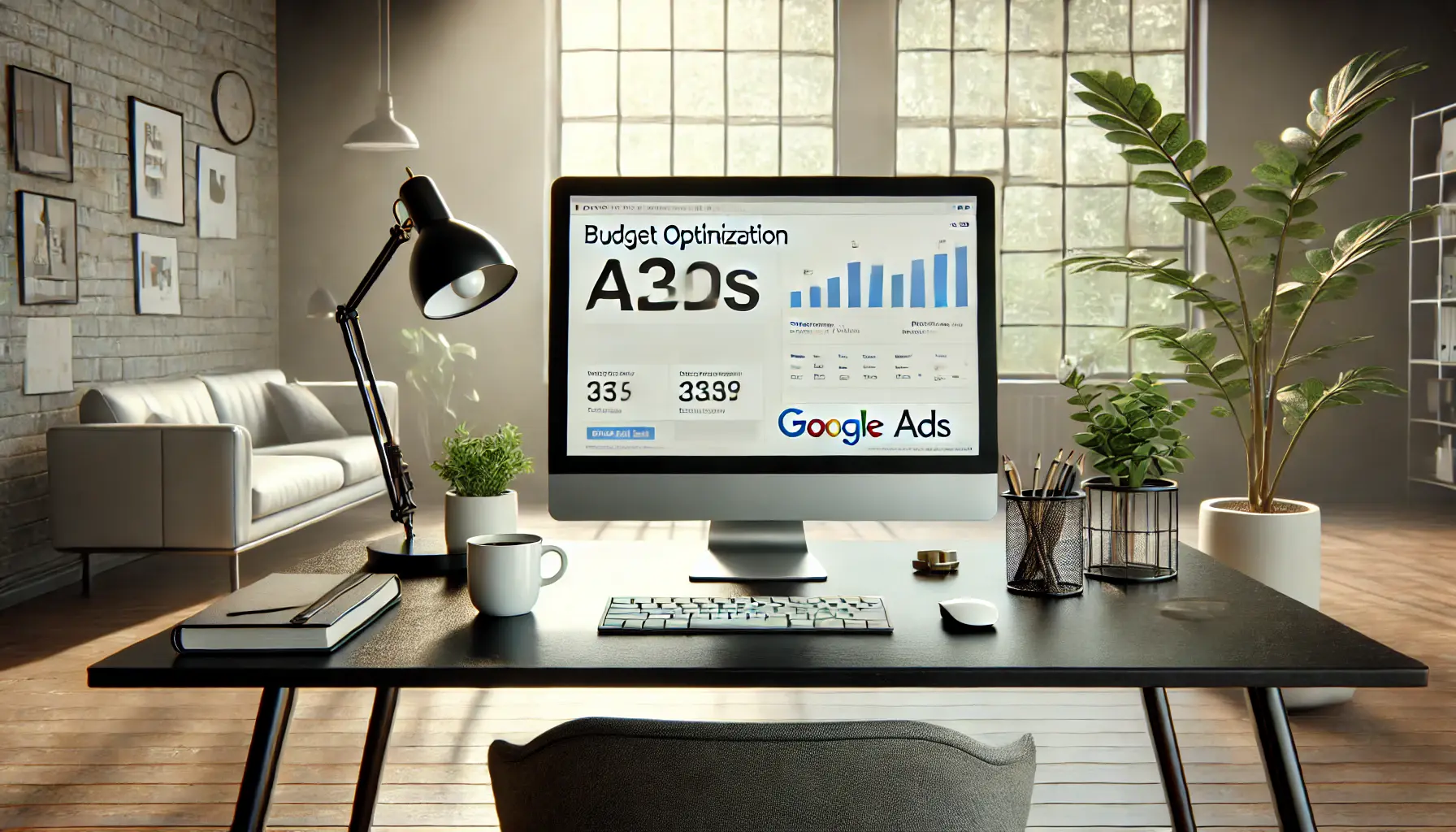Understanding the intricacies of budget allocation within Apple Ads is crucial for marketers aiming to optimize their Apple Search Ads Campaigns.
As the digital landscape becomes increasingly competitive, the ability to strategically allocate your advertising budget can significantly impact the overall success of your campaigns.
Apple Ads, known for its robust targeting capabilities and high user engagement rates, offers a unique opportunity for brands to connect with their target audience effectively.
However, navigating the budget allocation process requires a deep understanding of the platform’s features, the competitive environment, and your campaign objectives.
Effective budget allocation in Apple Ads is not just about how much you spend but where and how you spend it.
With the right strategy, businesses can maximize their return on investment, driving not only app downloads but also valuable user engagement.
This article delves into the best practices for budget allocation within Apple Ads, providing insights into how to leverage the platform’s capabilities to achieve your marketing goals.
Whether you’re new to Apple Search Ads or looking to refine your existing strategies, understanding the principles of effective budget allocation is key to unlocking the full potential of your advertising efforts.
- Understanding Apple Search Ads and Its Importance
- Strategizing Budget Allocation for Maximum ROI
- Optimizing Campaigns with Keyword Selection
- Leveraging Ad Creatives for Engagement
- Advanced Targeting Strategies
- Maximizing Impact with Bid Adjustments
- Analytics and Reporting for Informed Decisions
- Unlocking the Full Potential of Your Apple Ads Budget
- FAQs on Effective Budget Allocation in Apple Ads
Understanding Apple Search Ads and Its Importance
The foundation of effective budget allocation in Apple Ads begins with a comprehensive understanding of what Apple Search Ads are and why they are crucial for app marketers.
Apple Search Ads is an advertising platform that allows app developers and marketers to promote their apps within the App Store search results.
When users search for apps using specific keywords, ads for relevant apps appear at the top of the search results, thereby increasing visibility and the likelihood of downloads.
The importance of Apple Search Ads stems from the platform’s high intent user base.
Users actively searching for apps are more likely to engage and convert, making Apple Search Ads a highly effective channel for driving app downloads and engagement.
Moreover, with millions of apps vying for attention in the App Store, Apple Search Ads provide a critical opportunity for apps to stand out from the competition.
By strategically allocating your budget to target relevant keywords and user segments, you can significantly enhance your app’s visibility and attract a more engaged audience.
Key Components of Apple Search Ads
Several key components make up the Apple Search Ads platform, each playing a vital role in the success of your campaigns.
The first component is the ad itself, which is displayed at the top of the App Store search results.
These ads are designed to blend seamlessly with organic search results, providing a native advertising experience that does not disrupt the user’s search process.
The second component is the targeting options, which allow advertisers to target their ads based on user demographics, device types, and even user behavior.
This level of targeting precision ensures that your ads are shown to the most relevant audience, maximizing the efficiency of your budget allocation.
Another critical component is the bidding system, which determines the placement of your ads based on the competitiveness of your bid relative to other advertisers.
Understanding how to navigate the bidding system is essential for effective budget allocation, as it directly impacts the visibility of your ads.
Finally, the analytics and reporting tools provided by Apple Search Ads offer valuable insights into the performance of your campaigns.
By analyzing data on impressions, clicks, conversion rates, and more, you can make informed decisions about how to allocate your budget for maximum impact.
Effective budget allocation in Apple Ads requires a deep understanding of the platform’s key components, including ad formats, targeting options, the bidding system, and analytics tools.
Strategizing Budget Allocation for Maximum ROI
Allocating your budget effectively in Apple Search Ads is not just about spending money but investing it wisely to achieve the highest possible return on investment (ROI).
A strategic approach to budget allocation considers several factors, including campaign objectives, target audience, and competitive landscape.
By prioritizing these elements, you can ensure that your budget is spent in areas that offer the greatest potential for returns.
Setting Clear Campaign Objectives
Before diving into budget allocation, it’s crucial to define your campaign objectives.
Are you looking to increase app downloads, boost user engagement, or promote a new feature within your app?
Your objectives will guide your budget allocation decisions, helping you to focus your resources on campaigns that align with your goals.
- App Downloads: Allocate a larger portion of your budget to campaigns targeting high-intent keywords that are likely to drive downloads.
- User Engagement: Invest in retargeting campaigns aimed at users who have previously engaged with your app but have not converted.
- Feature Promotion: Use targeted ads to highlight new features to existing users, allocating budget based on the anticipated interest and usage rates.
Analyzing the Target Audience
Understanding your target audience is essential for effective budget allocation.
By analyzing user demographics, interests, and behavior, you can tailor your campaigns to reach the most relevant audience segments.
This not only improves the efficiency of your budget allocation but also increases the likelihood of achieving your campaign objectives.
- Demographic Targeting: Allocate budget to campaigns targeting specific age groups, genders, or locations that represent your ideal user base.
- Interest-Based Targeting: Focus on users with interests that align with your app, directing budget towards keywords and ad creatives that resonate with these interests.
- Behavioral Targeting: Invest in campaigns targeting users based on their previous interactions with your app or similar apps, optimizing budget allocation for higher engagement rates.
Competitive Landscape Analysis
Understanding the competitive landscape is crucial for strategic budget allocation.
By analyzing your competitors’ strategies, you can identify opportunities to differentiate your campaigns and allocate your budget more effectively.
This may involve targeting unique keywords, focusing on underserved audience segments, or leveraging creative ad formats to stand out.
- Keyword Analysis: Allocate budget to keywords that offer a balance between search volume and competitiveness, avoiding overly saturated keywords where possible.
- Audience Segmentation: Identify gaps in your competitors’ targeting strategies and allocate budget to reach these untapped audience segments.
- Creative Differentiation: Invest in ad creatives that set your app apart from competitors, allocating budget to test various formats and messaging strategies.
A strategic approach to budget allocation in Apple Search Ads involves setting clear objectives, analyzing the target audience, and understanding the competitive landscape to maximize ROI.
Optimizing Campaigns with Keyword Selection
One of the most critical aspects of effective budget allocation in Apple Ads is the selection and management of keywords.
Keywords are the bridge between user intent and your app, guiding potential users to your product amidst a sea of alternatives.
The strategic selection of keywords, coupled with ongoing optimization, can significantly enhance the performance of your campaigns and ensure efficient use of your budget.
Identifying High-Performance Keywords
Identifying keywords that are most relevant to your app and have a proven track record of high performance is the first step towards optimizing your campaign.
High-performance keywords are those that not only attract a significant volume of searches but also have a higher likelihood of conversion.
Utilizing tools provided by Apple Ads and conducting thorough market research can help in uncovering these valuable keywords.
- Analyze search volume data to prioritize keywords with higher user interest.
- Monitor conversion rates associated with each keyword to identify those that lead to actual app downloads or engagement.
- Consider the relevance of keywords to your app’s features and user benefits to ensure alignment with user intent.
Expanding Keyword Reach with Broad Match
While exact match keywords can drive targeted traffic, broadening your keyword strategy to include broad match keywords can significantly expand your reach.
Broad match allows your ads to show on searches that include variations of your keywords, related searches, and more.
This approach can uncover additional high-performing keywords and opportunities for budget allocation.
- Start with a base of exact match keywords that are highly relevant to your app.
- Gradually introduce broad match keywords to explore wider search queries with potential relevance.
- Monitor the performance of broad match keywords closely to adjust bids and budget allocation based on their effectiveness.
Utilizing Negative Keywords to Refine Targeting
Negative keywords play a crucial role in optimizing your campaign’s budget allocation by preventing your ads from appearing on irrelevant or low-performing search queries.
By specifying negative keywords, you can ensure that your budget is concentrated on searches that are most likely to convert, thereby improving the overall efficiency of your campaign.
- Identify irrelevant search terms that have triggered your ads but have not resulted in conversions.
- Add these terms as negative keywords to refine your campaign’s targeting and prevent wastage of budget on unproductive clicks.
- Regularly review and update your list of negative keywords based on campaign performance data and search query reports.
Effective keyword selection and optimization are pivotal for maximizing the impact of your budget in Apple Ads. By focusing on high-performance keywords, expanding reach with broad match, and refining targeting with negative keywords, you can enhance campaign efficiency and ROI.
Leveraging Ad Creatives for Engagement
Ad creatives play a pivotal role in the success of Apple Search Ads campaigns, serving as the primary touchpoint between your app and potential users.
The effectiveness of your ad creatives directly influences user engagement, conversion rates, and ultimately, the return on your budget allocation.
Crafting compelling ad creatives requires a blend of creativity, strategic messaging, and alignment with user expectations.
Designing Visually Appealing Ad Creatives
The visual appeal of your ad creatives is crucial in capturing the attention of users scrolling through the App Store.
High-quality images, engaging videos, and clear, concise messaging can make your ad stand out and encourage users to learn more about your app.
When designing ad creatives, consider the following:
- Use high-resolution images that accurately represent your app’s features and benefits.
- Incorporate engaging video content that showcases your app in action, highlighting key functionalities and user experiences.
- Ensure that your ad creatives are optimized for different device sizes and orientations to maintain visual appeal across all user devices.
Optimizing Messaging for Target Audiences
The messaging in your ad creatives should resonate with your target audience, addressing their needs, preferences, and pain points.
Tailoring your ad copy to speak directly to your audience can significantly improve engagement and conversion rates.
Consider the following strategies:
- Highlight the unique value proposition of your app, emphasizing how it solves specific problems or enhances the user’s life.
- Use clear, action-oriented language that encourages users to download or engage with your app.
- Segment your target audience and customize messaging to address the specific interests and needs of different user groups.
A/B Testing to Refine Ad Creatives
A/B testing is a powerful tool for optimizing your ad creatives and ensuring that your budget is allocated to the most effective versions.
By testing different variations of your ads, you can identify which elements resonate most with your target audience and adjust your creative strategy accordingly.
- Test different versions of images, videos, and ad copy to determine which combinations achieve the highest engagement and conversion rates.
- Analyze the performance data of each ad variation to make informed decisions about future creative development and budget allocation.
- Continuously iterate on your ad creatives based on A/B testing results and evolving user preferences to maintain campaign effectiveness over time.
Crafting visually appealing and strategically messaged ad creatives is essential for engaging users and maximizing the effectiveness of your Apple Search Ads budget. Through ongoing optimization and A/B testing, you can continually enhance the impact of your ad creatives on campaign performance.
Advanced Targeting Strategies
Advanced targeting strategies in Apple Search Ads allow advertisers to refine their audience to those most likely to engage and convert.
By leveraging Apple’s sophisticated targeting options, you can ensure your budget is allocated towards users who match your ideal customer profile, thereby increasing the efficiency of your ad spend and boosting ROI.
Demographic and Geographic Targeting
Demographic and geographic targeting enables advertisers to reach specific segments of the App Store’s user base.
By tailoring your campaigns to target users based on age, gender, location, and other demographic factors, you can significantly improve the relevance of your ads and the likelihood of conversion.
- Use geographic targeting to focus your campaigns on markets where your app has the highest potential for success.
- Employ demographic targeting to reach users whose age and gender align with your primary user base.
- Adjust your budget allocation to prioritize campaigns targeting demographics and geographies with the highest conversion rates.
Behavioral and Interest-Based Targeting
Behavioral and interest-based targeting goes a step further by allowing advertisers to reach users based on their past actions and interests.
This level of targeting precision ensures that your ads are shown to users who have demonstrated an interest in similar apps or related content, making them more likely to engage with your app.
- Target users who have previously downloaded or shown interest in apps within your category to increase relevance and conversion potential.
- Allocate a portion of your budget to retarget users who have engaged with your app but did not convert, encouraging them to take another look.
- Utilize interest-based targeting to capture the attention of users with specific hobbies or preferences that align with your app’s features.
Utilizing Custom Audiences for Precision Targeting
Custom audiences offer the highest level of targeting precision by enabling advertisers to define their audience based on specific criteria, such as past purchasers, high-value users, or users who have engaged with specific content.
By creating custom audiences, you can direct your budget towards users who are most likely to drive value for your app.
- Create custom audiences based on user behavior within your app, such as in-app purchases, level completions, or content preferences.
- Allocate increased budget to campaigns targeting custom audiences with a high lifetime value (LTV) or those who have previously converted.
- Regularly update your custom audiences based on new data and insights to ensure your targeting remains effective and relevant.
Implementing advanced targeting strategies in Apple Search Ads enables advertisers to allocate their budget more efficiently by reaching the most relevant and valuable users. Through demographic, behavioral, and custom audience targeting, you can enhance campaign performance and achieve better ROI.
Maximizing Impact with Bid Adjustments
Effective bid management is a critical component of maximizing the impact of your budget in Apple Search Ads.
By adjusting your bids based on campaign performance, market dynamics, and your strategic objectives, you can enhance ad visibility, improve cost efficiency, and drive better overall results.
Understanding when and how to adjust your bids is key to staying competitive and achieving your advertising goals.
Understanding Bid Strategies and Their Impact
Bid strategies in Apple Search Ads can significantly influence the visibility and performance of your ads.
Choosing the right bid strategy involves balancing your desire for ad placement with the cost implications of higher bids.
It’s essential to understand the impact of different bid strategies on your campaign’s reach and budget utilization.
- Consider using cost-per-acquisition (CPA) bidding to focus on conversions while controlling costs.
- Explore cost-per-tap (CPT) bidding to maximize visibility and engagement, adjusting bids based on the value of each tap.
- Utilize dynamic bidding strategies to automatically adjust bids in real-time based on performance and competition.
Adjusting Bids Based on Performance Data
Regularly reviewing and adjusting your bids based on campaign performance data is crucial for optimizing your budget allocation.
By analyzing metrics such as tap-through rate (TTR), conversion rate (CR), and cost per acquisition (CPA), you can make informed decisions about how to adjust your bids to improve campaign efficiency and effectiveness.
- Analyze performance data to identify high-performing keywords and ad groups that warrant higher bids.
- Lower bids for keywords or ad groups with lower-than-expected performance to reallocate budget to more effective areas.
- Consider the competitive landscape and adjust bids to remain competitive for high-value keywords.
Leveraging Seasonality and Market Trends
Seasonality and market trends can have a significant impact on user behavior and competition within the App Store.
Adjusting your bids to capitalize on these trends can help you maximize the impact of your budget during peak periods of user activity or when competition for keywords fluctuates.
- Increase bids during seasonal peaks or special events to capture higher user interest and engagement.
- Monitor market trends and adjust bids to stay ahead of changes in competition or user search behavior.
- Use historical performance data to anticipate seasonal trends and plan bid adjustments in advance.
Bid adjustments are a powerful tool for optimizing your Apple Search Ads campaigns. By understanding bid strategies, adjusting bids based on performance data, and leveraging seasonality, you can maximize the impact of your budget and drive better campaign results.
Analytics and Reporting for Informed Decisions
Analytics and reporting play a crucial role in the effective allocation of your budget in Apple Search Ads.
By leveraging the detailed insights provided by Apple’s analytics tools, advertisers can make informed decisions that enhance campaign performance and optimize budget utilization.
Understanding how to interpret and act on this data is key to continuously improving your advertising strategy.
Key Metrics to Monitor
Several key metrics are essential for evaluating the success of your Apple Search Ads campaigns and guiding your budget allocation decisions.
These metrics provide a comprehensive view of your campaign’s performance, from visibility and engagement to conversion and cost efficiency.
- Impressions: The total number of times your ads were displayed, indicating the reach of your campaigns.
- Tap-Through Rate (TTR): The percentage of impressions that resulted in a tap, reflecting user engagement with your ads.
- Conversions: The number of users who downloaded your app after tapping on an ad, indicating the effectiveness of your campaigns in driving actions.
- Cost Per Acquisition (CPA): The average cost of acquiring a user through your ads, providing insight into the cost efficiency of your campaigns.
Utilizing Analytics for Budget Optimization
Analytics tools provided by Apple Search Ads offer valuable insights that can inform your budget allocation strategy.
By analyzing campaign data, you can identify high-performing keywords and ad groups, adjust your targeting and bidding strategies, and allocate your budget to the most effective campaigns.
- Review campaign performance regularly to identify trends and areas for improvement.
- Allocate more budget to high-performing keywords and ad groups to maximize returns.
- Use analytics to refine your targeting strategy, focusing on the most valuable user segments.
Reporting Tools for Ongoing Optimization
Apple Search Ads provides robust reporting tools that enable advertisers to generate detailed reports on campaign performance.
These reports can be customized to focus on specific metrics, time periods, or campaign elements, providing the insights needed for ongoing optimization.
- Generate custom reports to analyze specific aspects of your campaigns, such as keyword performance or demographic targeting effectiveness.
- Use reporting tools to track the impact of bid adjustments, creative changes, or targeting updates on campaign performance.
- Regularly review reports to stay informed about your campaign’s performance and make data-driven decisions about future budget allocation.
Neglecting the power of analytics and reporting in Apple Search Ads can lead to inefficient budget allocation and missed opportunities for optimization. By closely monitoring key metrics, utilizing analytics for budget optimization, and leveraging reporting tools for ongoing optimization, advertisers can significantly enhance the effectiveness of their campaigns.
Unlocking the Full Potential of Your Apple Ads Budget
Effective budget allocation in Apple Ads is not merely a task; it’s an art that combines strategic planning, continuous optimization, and an in-depth understanding of the platform’s capabilities.
Throughout this article, we’ve explored various facets of Apple Search Ads, from understanding its core components and strategizing budget allocation for maximum ROI to leveraging ad creatives and advanced targeting strategies.
Each element plays a crucial role in ensuring that your advertising budget is not just spent but invested wisely to yield the best possible returns.
Strategic Insights for Budget Allocation
Allocating your budget in Apple Ads requires a strategic approach that aligns with your campaign objectives, targets the most relevant audience, and adapts to the competitive landscape.
By setting clear campaign objectives, analyzing your target audience, and understanding the competitive landscape, you can ensure that your budget is directed towards the most impactful campaigns.
Moreover, optimizing campaigns with precise keyword selection, engaging ad creatives, and advanced targeting strategies further enhances the effectiveness of your budget allocation.
Optimization and Analytics: The Path to Success
Maximizing the impact of your budget also relies on effective bid management and the utilization of analytics and reporting tools.
Adjusting bids based on performance data, seasonality, and market trends allows you to stay competitive and responsive to changes in the advertising environment.
Furthermore, leveraging analytics for budget optimization and employing reporting tools for ongoing campaign evaluation are essential practices that enable advertisers to make informed decisions, refine strategies, and achieve better outcomes over time.
- Regularly review key performance metrics to guide your budget allocation decisions.
- Utilize analytics to identify high-performing keywords and ad groups deserving of increased budget.
- Generate and analyze reports to track the effectiveness of bid adjustments and strategic changes.
In conclusion, effective budget allocation in Apple Ads is a dynamic process that demands attention to detail, strategic foresight, and a commitment to continuous improvement.
By embracing the strategies and insights discussed in this article, advertisers can unlock the full potential of their Apple Ads budget, driving not only higher app downloads but also fostering meaningful engagement with their target audience.
As the digital landscape evolves, so too should your approach to budget allocation in Apple Ads, ensuring that your advertising efforts remain effective, efficient, and aligned with your marketing objectives.
If you're seeking expertise in Apple Search Ads campaigns, visit our service page for professional management!
FAQs on Effective Budget Allocation in Apple Ads
Explore commonly asked questions to enhance your understanding and strategy for Apple Ads.
The daily budget is the maximum amount you’re willing to spend on ads per day, setting a cap on your ad spend to ensure cost control.
Keyword level budgeting involves allocating funds based on the performance of individual keywords, optimizing for efficiency and ROI.
Establishing an overall budget is the first step, ensuring you have a clear financial plan for your advertising efforts.
Optimize by analyzing performance data, adjusting bids for high-performing keywords, and reallocating funds to maximize returns.
Differentiating bids based on audience segments and keyword relevance ensures efficient budget use and maximizes returns.
A broad match campaign uses broad match keywords to capture a wider range of relevant search queries, expanding your ad’s reach.
Manage monthly spend by setting a daily budget that reflects your overall monthly advertising financial plan.
It’s recommended to allocate 10–30% of your total budget to broad match campaigns to explore wider audience reach.











